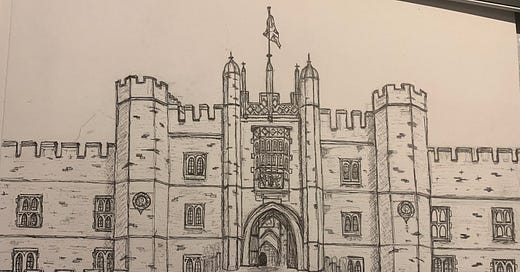Hampton Court Palace was and still is beautiful, splendid, imbued with extravagance and opulence. With a fascinating history spanning over 500 years, it played host to some of the most famous figures and events in English history.
The palace was originally built in 1514 by Cardinal Thomas Wolsey, an influential English statesman and Catholic bishop in the court of Henry VIII. The palace served to propagate the wealth and influence of Wolsey.
In 1529 Wolsey fell out of favour. He was charged with treason in 1530 but died of natural causes before he could be executed. As a result, Henry VIII claimed the palace for himself, renovating and expanding the palace to suit his needs and house his extensive retinue of courtiers. He built a chapel, a tennis court, a great hall and luxurious new apartments, as the palace became one of his favourite royal residences.
The palace became the centre of political power and entertainment during the reign of Henry VIII, playing host to an array of lavish feasts, tournaments and balls. It was also the location of significant personal events in the life of Henry VIII. His three children were born there, including his male heir Edward VI in 1537. Two weeks later, it also witnessed the death of his mother, Jane Seymour.
After Henry VIII died in 1547, the palace also played a significant role in the reigns of future monarchs who made further improvements to the palace. James I built a new banqueting hall, and Charles I added the famous ‘Hampton Court Maze’ while renovations continued into the 17th and 18th centuries. However, it gradually became less important as a royal residence towards the end of the 18th century before being opened to the public by Queen Victoria in 1838.
Today, Hampton Court Palace remains a popular tourist attraction and the site of numerous movies and events, such as the Road Cycling at the 2012 Summer Olympics and an annual half marathon.




